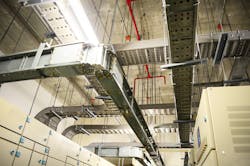In many plants, the answer to that question is only a guess. That situation exists usually because management tries to “save money” on infrastructure maintenance.
The following tips allow you to have a more educated answer even if your budget isn’t realistic, and to perhaps increase that budget:
- Check circuit breakers to ensure the settings are where they are supposed to be. If the correct settings are unknown, that’s proof you need a qualified firm to assess your circuit protection strategy.
- If you have liquid-filled transformers, check the pressure gauge (it should be positive), trend the temperature, and inspect for leaks around the base. If you find a problem transformer, consider that good news because that’s your foot in the door for scheduled oil analysis.
- The “we’ve gotten by without it so far” excuse can prevent you from performing predictive maintenance (PdM), such as thermography or ultrasonic analysis. Have a qualified testing firm conduct the recommended testing (per IEEE 3007.2-2010) on critical portions of your distribution system as a pilot project.
About the Author

Mark Lamendola
Mark is an expert in maintenance management, having racked up an impressive track record during his time working in the field. He also has extensive knowledge of, and practical expertise with, the National Electrical Code (NEC). Through his consulting business, he provides articles and training materials on electrical topics, specializing in making difficult subjects easy to understand and focusing on the practical aspects of electrical work.
Prior to starting his own business, Mark served as the Technical Editor on EC&M for six years, worked three years in nuclear maintenance, six years as a contract project engineer/project manager, three years as a systems engineer, and three years in plant maintenance management.
Mark earned an AAS degree from Rock Valley College, a BSEET from Columbia Pacific University, and an MBA from Lake Erie College. He’s also completed several related certifications over the years and even was formerly licensed as a Master Electrician. He is a Senior Member of the IEEE and past Chairman of the Kansas City Chapters of both the IEEE and the IEEE Computer Society. Mark also served as the program director for, a board member of, and webmaster of, the Midwest Chapter of the 7x24 Exchange. He has also held memberships with the following organizations: NETA, NFPA, International Association of Webmasters, and Institute of Certified Professional Managers.
